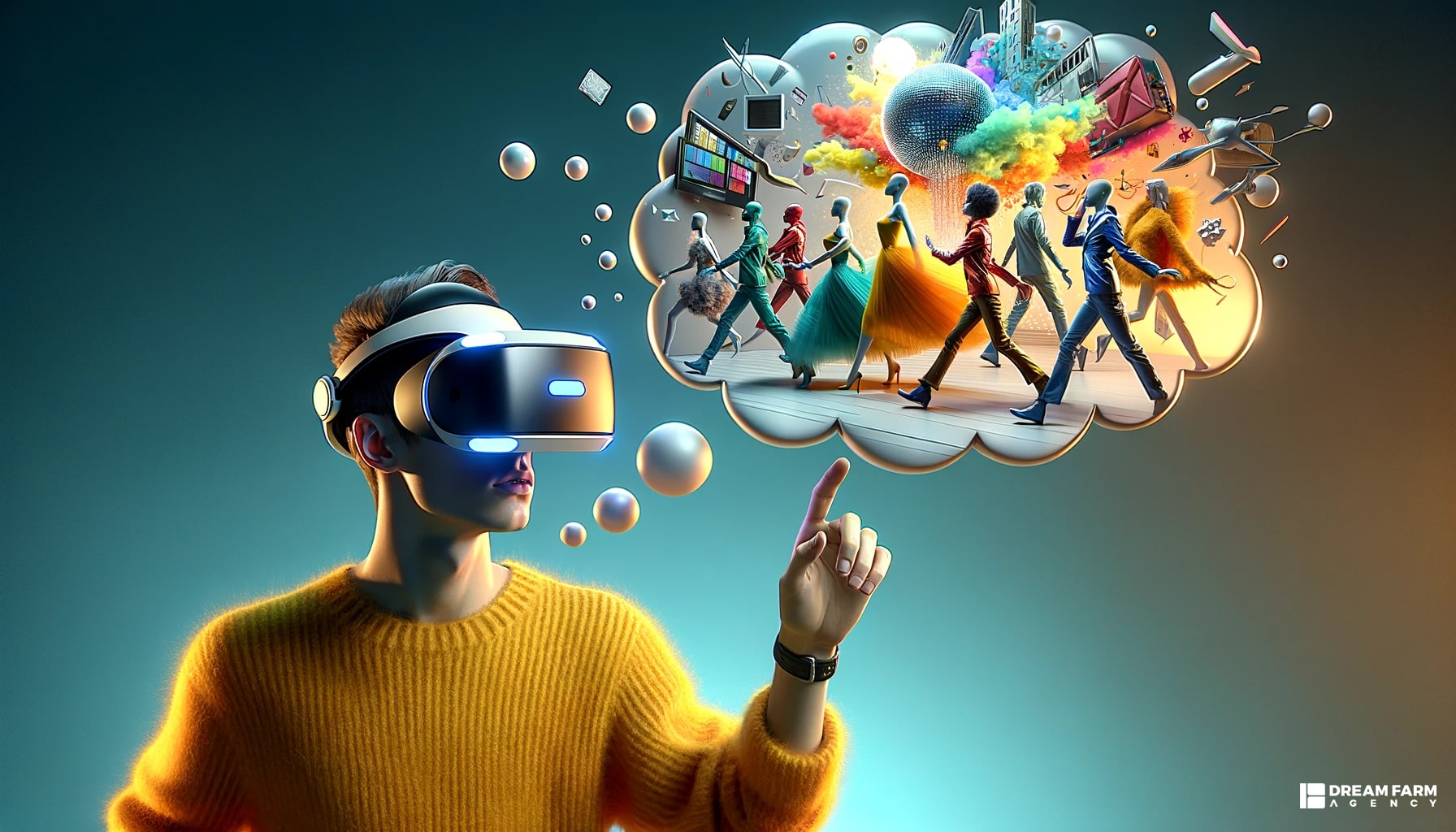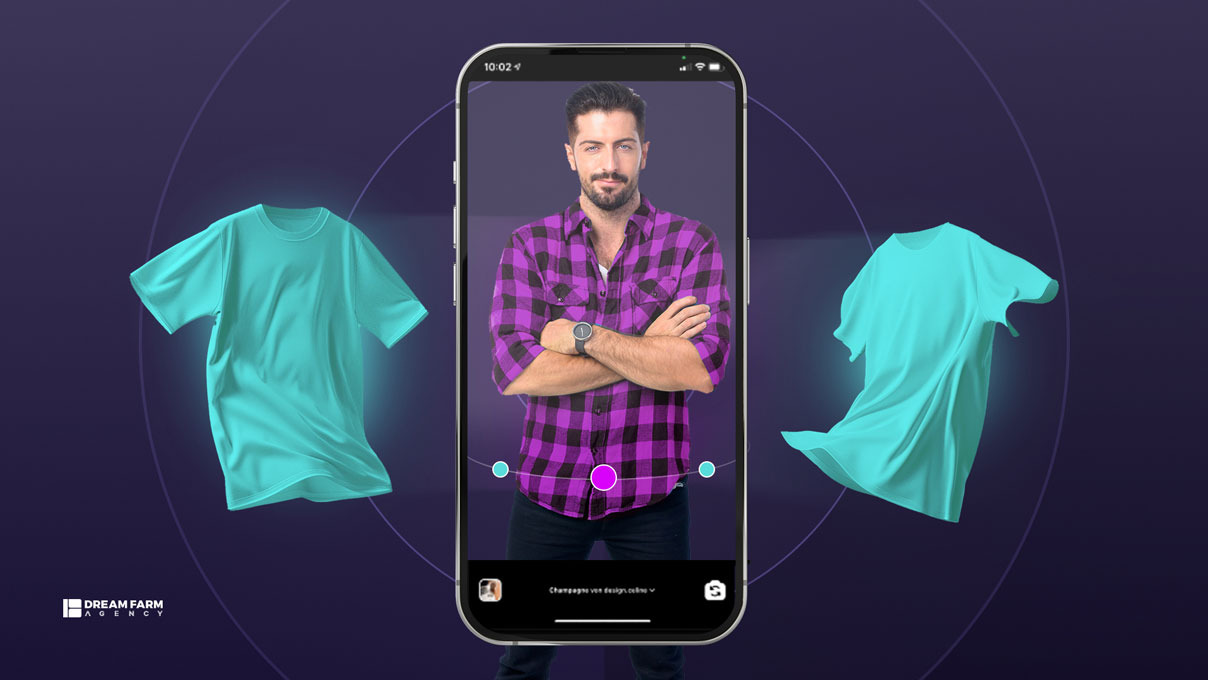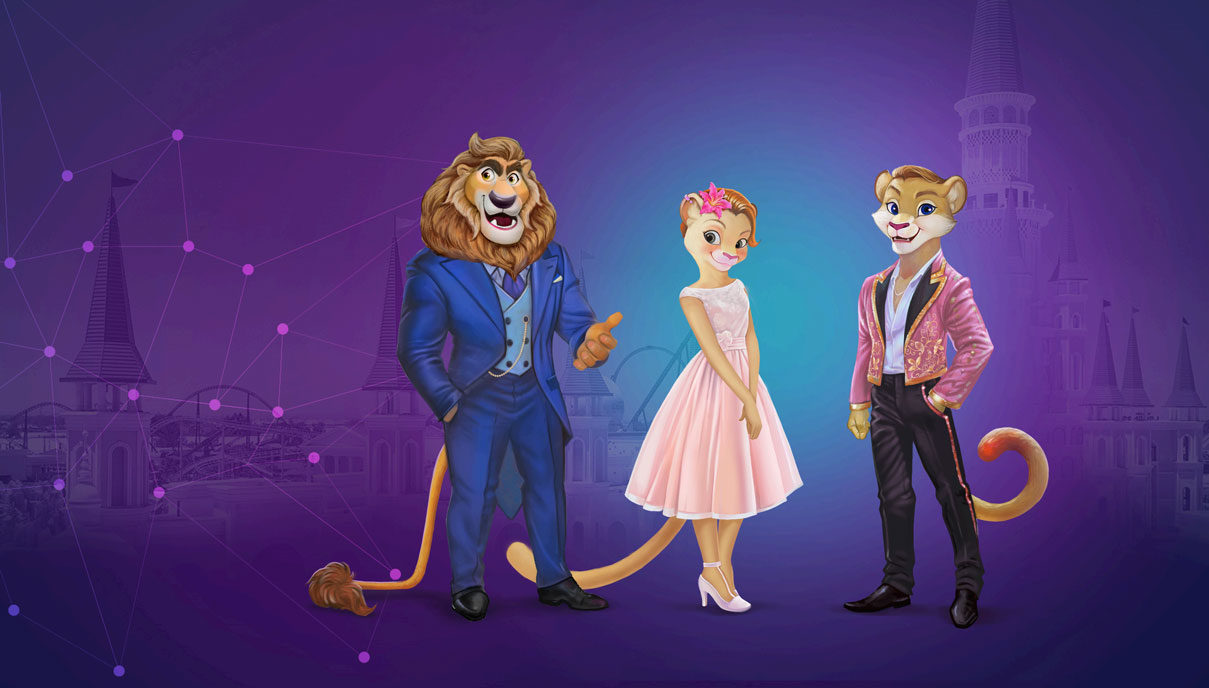Whether through a physical space to explore, a virtual adventure using augmented reality, or a multi-sensory journey, the goal is to connect with customers on a deeper level.
By doing so, brands attract loyal followers and open doors to new audiences. When brands team up for these experiences, it will be a win-win situation, boosting awareness and engagement while maximizing revenue.
Below, you can discover the most effective tips, strategies, and examples to craft your immersive brand experiences better.
What Is Immersive Brand Experience?
Picture this: you’re not just scrolling past an advertisement for a refreshing beverage; instead, you find yourself standing in a vibrant pop-up café, surrounded by the aroma of freshly brewed coffee.
This immersive encounter isn’t merely about showcasing a product; it’s about immersing you in a multisensory experience that leaves a lasting impression. Immersive brand experience makes you feel like you’re part of the action.
It’s not just about seeing or hearing about a product; it’s about engaging all your senses – from the sights and sounds to the touch, smell, and taste. This immersive approach allows you to interact with the brand more meaningfully, going beyond passive observation.
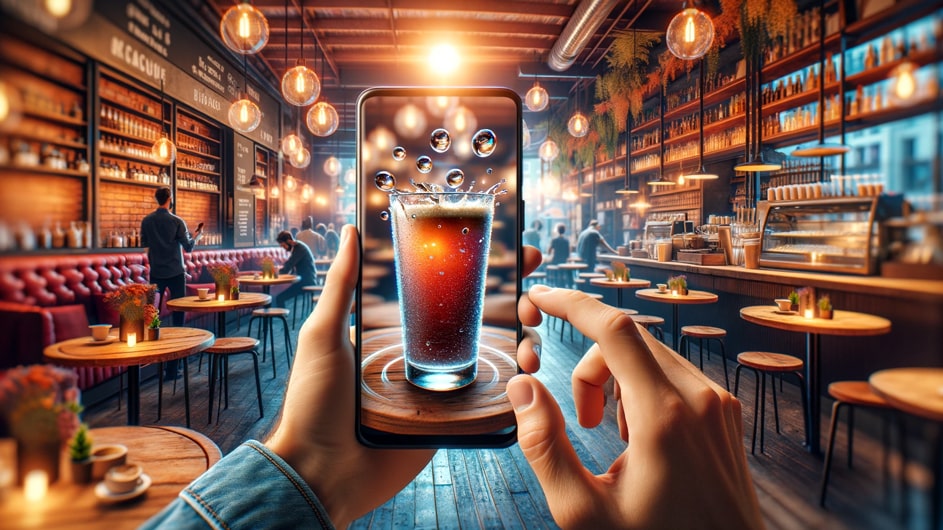
With the help of cutting-edge technology like VR, AR, interactive setups, or live events, brands create environments that feel incredibly lifelike, pulling you deeper into their world. Immersive brand experience helps them stand out in competitive markets and create lasting impressions on customers.
Letting you feel the brand firsthand builds trust and confidence in its offerings. Active participation and exploration make the whole experience enjoyable and engaging, making you more likely to remember and trust the brand in the long run.
In other words, immersive brand experiences are marketing tactics aimed to immerse consumers, physically or emotionally, into interactive and memorable environments where they’re not just observing, like in traditional ads, but fully participating.
These experiences serve as touchpoints for shared interactions, enhancing emotional connections that transcend mere transactions.
Additionally, immersive experiences enable brands to tap into new audiences who may not have previously considered their offerings, expanding their reach and market potential.
In today’s saturated advertising landscape, having enough knowledge about what brand experiences are would increase efficiency in developing best-suited strategies.
However, the immersive brand experience stands above all other options as it offers unique opportunities for brands to differentiate themselves by providing consumers with engaging, fun, and memorable interactions.
Although brands and marketers are somehow aware of the efficiency of immersive brand experiences, this tactic is backed by empirical evidence and research.
Why Is Immersive Brand Experience Beneficial?
Immersive brand experiences offer a variety of benefits that extend beyond just capturing consumers’ attention. Among the most significant advantages are developing enhanced customer engagement and a more substantial competitive advantage.
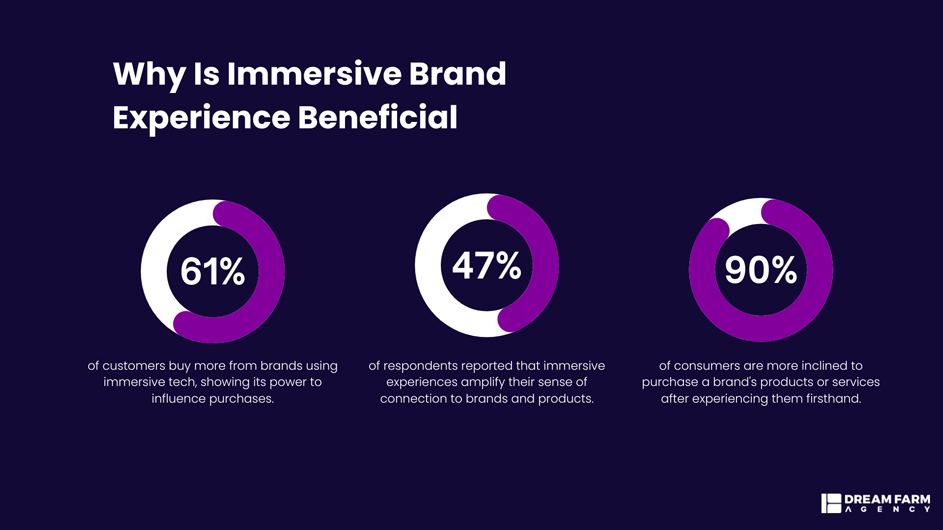
Research by Accenture reveals that a 61% of customers are more likely to purchase from brands that utilize immersive technology, emphasizing the persuasive power of immersive experiences in influencing purchase decisions.
Furthermore, 47% of respondents reported that immersive experiences amplify their sense of connection to brands and products. It highlights that immersive experiences can significantly impact consumer perceptions and preferences.
By allowing consumers to try products before making purchasing decisions and helping them better understand the brand’s value proposition, immersive brand experiences drive conversion and repeat business.
Immersive experiences can also be seamlessly integrated with other marketing strategies, boosting their impacts and extending the brand’s reach across multiple channels.
The effectiveness of immersive brand experiences is underlined by research conducted by EventTrack, indicating that over 90% of consumers are more inclined to purchase a brand’s products or services after experiencing them firsthand.
The study sheds light on how integrating immersive and experiential marketing into a brand’s strategy can be beneficial. Experiential marketing also focuses on crafting immersive brand encounters that deeply engage the audience, aiming to leave a lasting impact.
Together, these approaches foster emotional connections with consumers, building brand loyalty and advocacy through shared experiences that resonate personally.
Ultimately, immersive brand experiences offer a compelling combination of authenticity, engagement, and productivity. Brands must familiarize themselves with different types and methods and choose the best fit in today’s competitive marketplace.
Types of Immersive Brand Experiences
Among various brand experience examples, immersive brand experiences offer peculiar opportunities for more profound consumer involvement.
Brands can use tangible physical locations for people to explore or virtual environments or encounters to connect with their customers on a deep and emotional level. In the following paragraphs, you can get insights into different possibilities.
For a related read, check out: The Different Types Of Brand Experiences
Physical Spaces
Physical spaces are essential in creating immersive brand experiences that resonate with consumers. Therefore, brands must offer distinctive and touchable experiences that differentiate them from online shopping.
Physical spaces serve as community hubs where customers can connect and socialize, providing a sense of belonging and camaraderie.
Design plays a pivotal role in shaping customer emotions and behaviors, directly impacting the brand’s ability to attract and keep customers, increase sales, and establish a strong brand identity.
Elements such as signage, lighting, and color scheme must be thoughtfully selected to create a unified and visually attractive environment that aligns with the brand’s identity and goals.
Moreover, interactive displays allow customers to engage with products hands-on, creating a sense of playfulness and exploration. Personalization further enhances tangible customer experience by offering customized recommendations and products tailored to individual preferences.
Most importantly, multi-sensory experiences, combining sight, sound, touch, and smell, create a more engaging and memorable experience that strengthens the bond between consumers and the brand.
Apple stores are, for example, designed to be immersive brand experiences, with elegant and modern architecture, interactive product displays, and workshops and events where customers can learn more about Apple products and services.
Brands can create memorable customer experiences that improve loyalty and advocacy by designing visually appealing, emotionally resonant, and experientially rich environments via hi-tech multimedia.
Virtual Spaces
Brands can also use virtual spaces to create immersive brand experiences through apps, games, and emerging techs like virtual reality (VR) and augmented reality (AR).
Integrating technology allows brands to enhance the in-person experiences and offer customers a virtual experience, further enhancing their engagement.
By combining storytelling with advanced technology, brands can transport customers to new and exciting worlds from the comfort of their own homes. These virtual experiences can also engage different senses, using light, color, and sound to create a feeling of wonder and surprise.
Brands can also employ various strategies to maximize their reach and impact.
For example, creating event hashtags encourages social media sharing, and freebies motivate customers to share their experiences online.
Offering unique incentives, such as book signings or product discounts, can also attract customers and enhance their overall experience.
Of course, by partnering with experts in strategy, design, and production, brands can ensure their immersive experiences are successful in telling their stories and delighting their customers.
So, it’s necessary to stay informed about current trends and gather insights from examples in the industry to choose the best immersive experience strategies.
Immersive Brand Experiences Trends and Examples
Brands are using cutting-edge technology to offer consumers novel experiences and build connections in a more significant, more emotional way. We’ll get into some examples later on in this piece. In this part, we’ll explore some of the trends and instances of this approach.
AR/VR Interactive Product Demos
Interactive product demos are emerging as a game-changer in the evolving marketing landscape. By integrating digital technology like augmented reality (AR) and virtual reality (VR), brands can offer immersive experiences that enhance the shopping journey.
AR enriches the physical world with digital overlays, providing users with additional information and engaging content as they interact with products. On the other hand, VR and transports users to virtual environments, allowing them to experience products in entirely new ways.
For example, IKEA introduced an AR app to help customers visualize furniture in their homes. Users can simply point their phones at furniture items and select the “AR” option to see how they fit in their space.
The app also allows users to adjust perspectives and colors, making finding the ideal furniture piece easier.
Therefore, innovative and engaging demonstration methods, such as simulating real-world usage scenarios, can increase brand awareness, customer satisfaction, and conversion rates.
also read this: 13 examples of augmented reality (AR) brand experiences
Metaverse Events
Using metaverse technology, brands can provide interactive experiences that transcend traditional events, developing ongoing engagements even after the event concludes.
Virtual events unite people worldwide in a digital space where they can participate in various activities that suit different interests and preferences.
They provide opportunities for social interaction, entertainment, and exploration, allowing participants to customize their experiences and connect dynamically with others.
In 2022, Decentraland, a 3D virtual world browser-based platform, organized a four-day metaverse music festival featuring top artists like Björk and Ozzy Osbourne.
The festival aimed to recreate real-world music festivals while exploring new ideas unique to the metaverse. Each stage was designed to reflect the aesthetic of the performing artist, along with various interactive attractions for attendees to enjoy.
Traditional physical events of this scale often require significant financial investments. Extensive planning and preparation, even years and months before the physical setup, are necessary to execute such large-scale events.
Virtual and hybrid metaverse events are shaping the future of immersive brand experiences, offering attendees a dynamic engagement platform while minimizing the environmental impact of physical gatherings.
Crowdsourcing Campaigns
Collaborative marketing campaigns offer brands a dynamic way to engage their audience. By involving influencers, brands create a sense of community and ownership among their consumers.
Nike, for instance, has advanced this approach with its innovative .SWOOSH (https://blog.swoosh.nike/) Web3 platform. It’s an innovative platform designed to meet the growing demand for virtual wearables and NFT collections.
Through .Swoosh, Nike enthusiasts, and customers can actively participate in the creation process of virtual Nike products while also earning royalties for their contributions. They can also join community challenges and exclusive events, further solidifying their connection with the brand.
Brands use crowdsourcing campaigns to involve their audience in decision-making processes. By receiving ideas, feedback, and consumer suggestions, brands enable their audience to participate actively in product creation and marketing.
For instance, a fashion house might initiate a crowdsourcing campaign to gather ideas for their desired garment’s fabric, color, and design. With interactive metaverse spaces featuring 3D graphics, brands unlock endless opportunities for co-creation and collaboration, fostering emotional investment in brand affiliation.
Gamification
Gamification has emerged as a dynamic tool for creating immersive brand experiences by tapping into people’s natural inclination toward play. Through gamified experiences, brands can captivate audiences, develop engagement, and drive brand loyalty.
At the Nike House of Innovation in New York City, an interactive space was designed to introduce customers to Nike’s latest product, the Joyride Flyknit running trainers.
Their goal was to create a joyful and memorable experience while showcasing the shoes’ performance, and they achieved this by incorporating playful elements such as a digital ball pit and collaborative games inspired by childhood activities.
The result was a successful brand experience that attracted thousands of users to the Nike store, with many sharing their experiences online. Ultimately, through social media, the excitement surrounding the immersive installation spread rapidly, promoting Joyride shoe sales.
The key to successful gamification lies in designing experiences that strike the right balance between entertainment and brand promotion. By integrating elements of competition, achievement, and reward, brands can create compelling narratives that resonate with their target audience.
Moreover, gamified experiences provide brands with valuable data insights into consumer behavior and preferences, enabling them to employ their marketing strategies more effectively.
Interactive Set-Ups
Customers love interactive experiences that allow them to engage with products actively. Through location-based marketing strategies, brands can incorporate technology to create emotionally resonant experiences.
Coca-Cola’s “Hug Me” campaign exemplifies this approach, encouraging individuals to embrace a hug-activated vending machine to receive a free can. It developed emotional connections and inspired user-generated social media content.
Whether through gesture-based interactions, virtual reality experiences, or augmented reality overlays, interactive displays captivate attention and leave a lasting impression on consumers.
Brands can make the most of these technologies to tell their stories uniquely and compellingly, driving brand awareness, loyalty, and sales.
Immersive 360-Degree Videos
360-degree videos deliver a wealth of visual information, making them ideal for capturing and retaining audience attention in today’s fast-paced world of distractions.
Red Bull’s F1 360° Experience transformed how fans engage with Formula 1 racing, offering an immersive journey into the heart of the action, with stunning 360-degree footage captured from inside the cockpit during actual races.
Viewers are transported into the driver’s seat, experiencing the adrenaline-pumping thrills and intense competition firsthand. This innovative virtual reality initiative showcased Red Bull’s commitment to exploring new frontiers in technology and provided motorsport enthusiasts worldwide with an unforgettable and immersive experience.
Brands have embraced these videos to provide immersive experiences to smartphone users and those equipped with VR headsets to transport viewers into another world.
Of course, with the rise of metaverse environments, integrating 360-degree videos presents new avenues for marketers to immerse consumers in their brand narratives.
AI-Driven Personalization
AI is crucial in powering intelligent virtual environments and facilitating personalized experiences. Brands can create immersive environments via AI that adapt to user interactions, providing dynamic and engaging experiences.
From virtual assistants to dynamic content generation, AI-driven innovations enable brands to deliver seamless interactions and innovative applications that enhance user engagement.
Whether through AI-powered chatbots guiding visitors through virtual spaces or voice-based marketing initiatives, brands can use AI to create immersive experiences beyond traditional online stores’ limitations.
Moreover, AI can automate the organization and visualization of marketing analytics. By analyzing vast data, AI enables brands to deliver highly personalized content and interactions, ultimately enhancing stronger consumer connections.
It enables metaverse marketers to dedicate their attention to more strategic matters, like creating a synergy between various aspects and ensuring marketing effectiveness and brand awareness.
Power of Immersion in Brand Activation
Immersive brand experiences, like the ones mentioned above, serve as powerful catalysts for brand activation by creating meaningful engagements. These experiences captivate audiences and evoke emotional responses, making them more memorable than traditional marketing approaches.
By showcasing their brands in immersive environments, companies can engage directly with customers, tangibly conveying their brand stories and values.
Through immersive experiences, brands can demonstrate their uniqueness and character, leaving a memorable impact on customers. The personalized encounters resonate with individuals on a deeper level.
Innovations like augmented reality (AR) and virtual reality (VR) can create immersive environments that allow customers to explore products and services in creative and engaging ways. It brings increased brand awareness and customer loyalty.
Furthermore, immersive brand experiences offer versatility in their execution, whether through physical pop-up events, virtual spaces, or enhanced online shopping experiences. Brands can leverage these different channels to reach diverse audiences and maximize engagement.
By incorporating immersive technologies into their brand activation strategies, companies can create memorable experiences that captivate customers and drive meaningful interactions and long-term brand loyalty.
Expert Solutions Customized for Your Brand
At Dream Farm Agency as a immersive experience design agency , we specialize in creating immersive and interactive experiences that surprise and delight audiences, providing end-to-end support to bring your vision to life. Contact us and schedule a free consultation today and take your next immersive experience to the next level.
